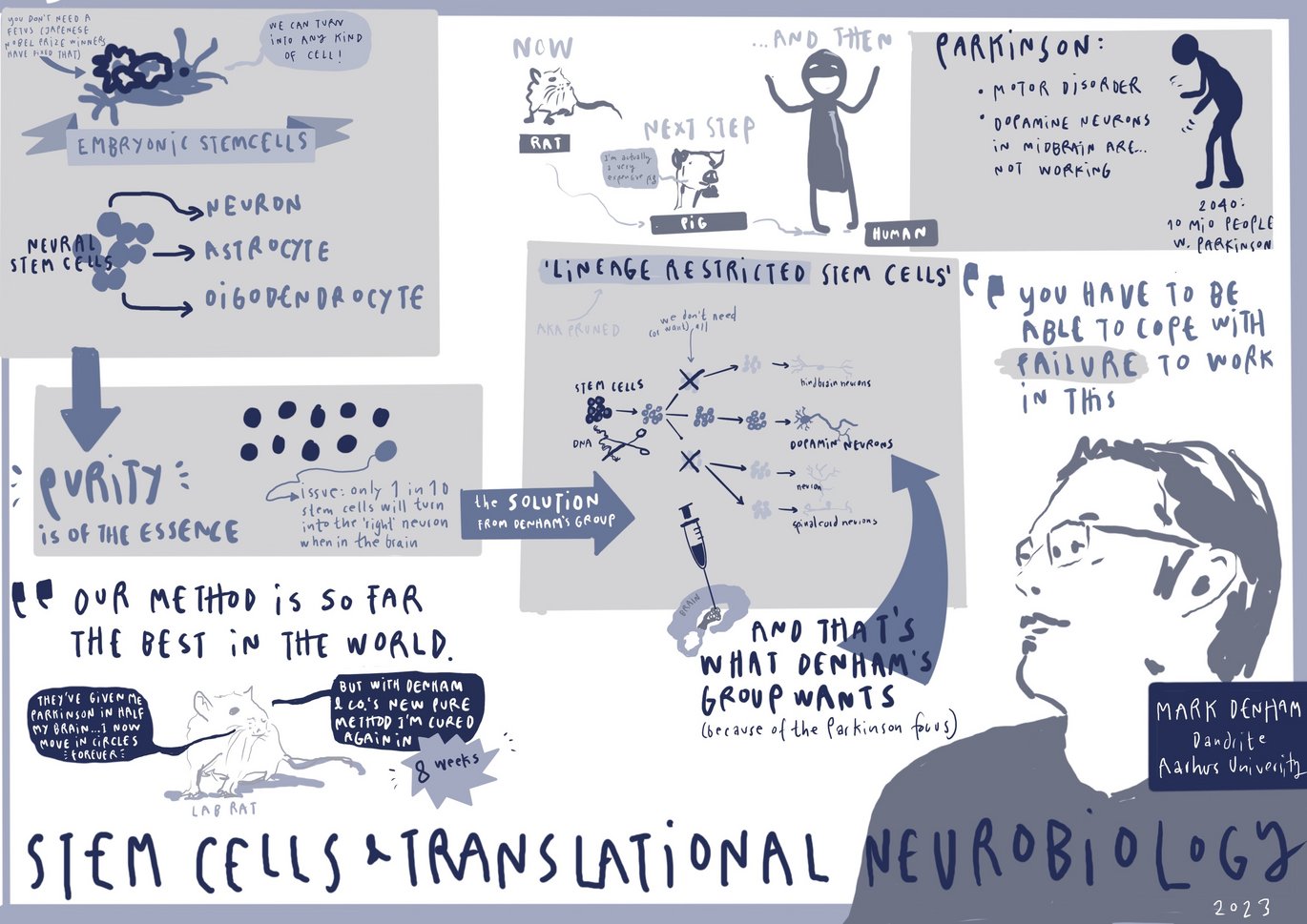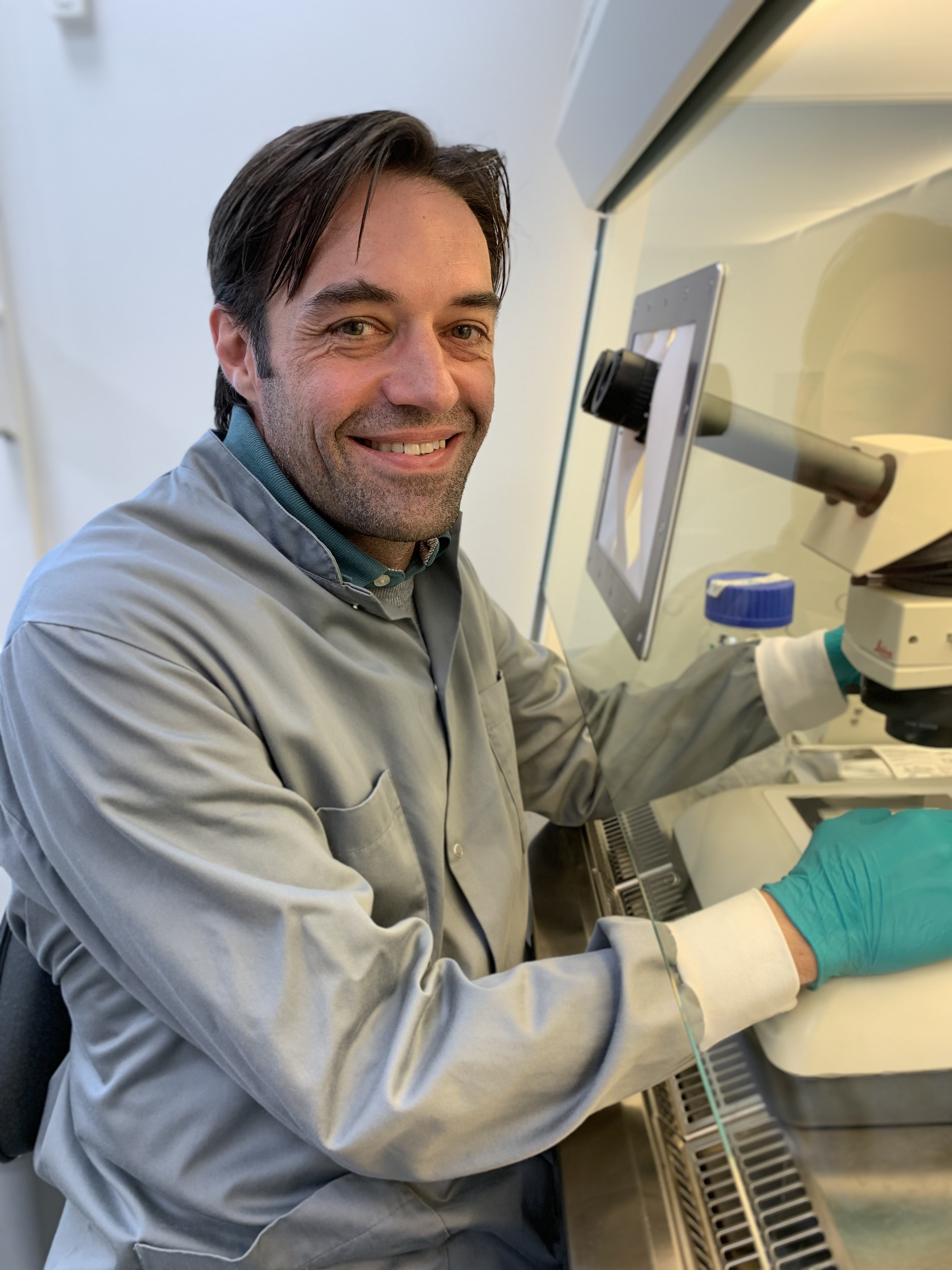Alumni Group Leader Mark Denham: “If you had asked me ten years ago if I’d be in this position after nine years, I would have said; ‘That would be amazing’.”
Mark Denham was the first researcher to work with stem cells at Aarhus University when he joined as a new Group Leader at DANDRITE in 2013. Today, his research has brought him remarkably close to initiating a clinical trial with what is likely one of the most advanced methods in the world for developing a therapy against Parkinson’s disease.


Article originally published on DANDRITE's website: https://dandrite.au.dk/display/artikel/alumni-group-leader-mark-denham-if-you-had-asked-me-ten-years-ago-if-id-be-in-this-position-after-nine-years-i-would-have-said-that-would-be-amazing
Mark Denham was a postdoc at Karolinska University when he first came across the open call for a Group Leader position at DANDRITE. What particularly attracted him was the translational focus of the new research center, which perfectly aligned with his ambition to one day turn his research into a medical company.
Reflecting on his journey, he says:
“If you had asked me back when I was at Karolinska if, after nine years, I would be in this position—publishing a strong paper and developing the world’s best method for generating dopamine neurons as a therapy for Parkinson’s patients—I would have said, ‘That would be amazing.’ But to now also be at the cusp of entering a clinical trial is incredible.”
Although the journey was filled with challenges, a constant race against time, and a critical midterm evaluation, Mark now looks back on his career as a Group Leader with a sense of accomplishment and many valuable lessons learned.
"Stem cell projects are long-term endeavors. In hindsight, this journey has brought many struggles and challenges. But I always knew it would take time, and eventually, the results would come."
Today, Mark Denham continues as an Associate Professor at the Department of Biomedicine at Aarhus University, working diligently to secure funding to propel his research from the lab to the clinic—an effort that is costly in both time and resources.
“I believe in the technique I have developed, and I know that the project has broader implications. This technology can also be applied to other diseases, making it truly a breakthrough innovation.”